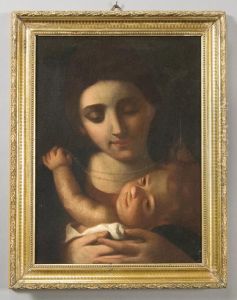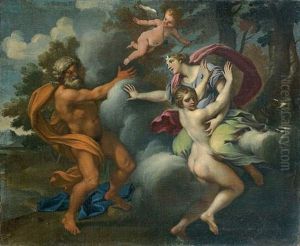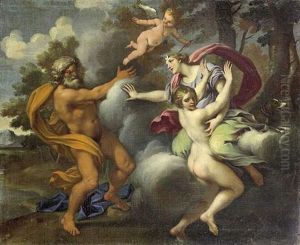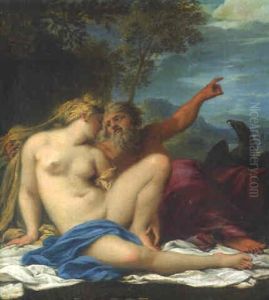Bonaventura Lamberti Paintings
Bonaventura Lamberti was an Italian painter born in 1653 in Carpi, near Modena, in what is now the Emilia-Romagna region of Italy. He is known for his work in the Baroque style, which is characterized by dramatic expression, rich color, and intense light and shadow. Lamberti's early life and training are not well documented, but it is believed that he may have been a pupil of the painter Giovanni Maria Galli, also known as Bibiena.
Lamberti's work was primarily focused on religious subjects, and he painted numerous altarpieces and frescoes for churches in Italy. His style was influenced by the dramatic intensity of Caravaggio and the Bolognese school, yet he also drew upon the rich colors and decorative qualities of Venetian painting. This blend of influences helped him develop a distinctive style that was both expressive and ornate.
Throughout his career, Lamberti worked in various cities, including Bologna, where he became a member of the Accademia Clementina. His presence in Bologna is important as it was one of the main centers for Baroque painting during the 17th century, and interaction with other artists and the academic environment may have further honed his skills and stylistic approach.
Lamberti's works are characterized by a strong narrative element, and he had a talent for conveying emotion through his religious scenes. He was also skilled in the use of chiaroscuro, the technique of using strong contrasts between light and dark to achieve a sense of volume and depth in painting.
Bonaventura Lamberti died in 1721. While he may not be as widely known as some of his contemporaries, his paintings still offer valuable insight into the artistic trends and religious sensibilities of his time. His works are preserved in various churches and collections, serving as a testament to his skill and contributing to the rich tapestry of Baroque art.



